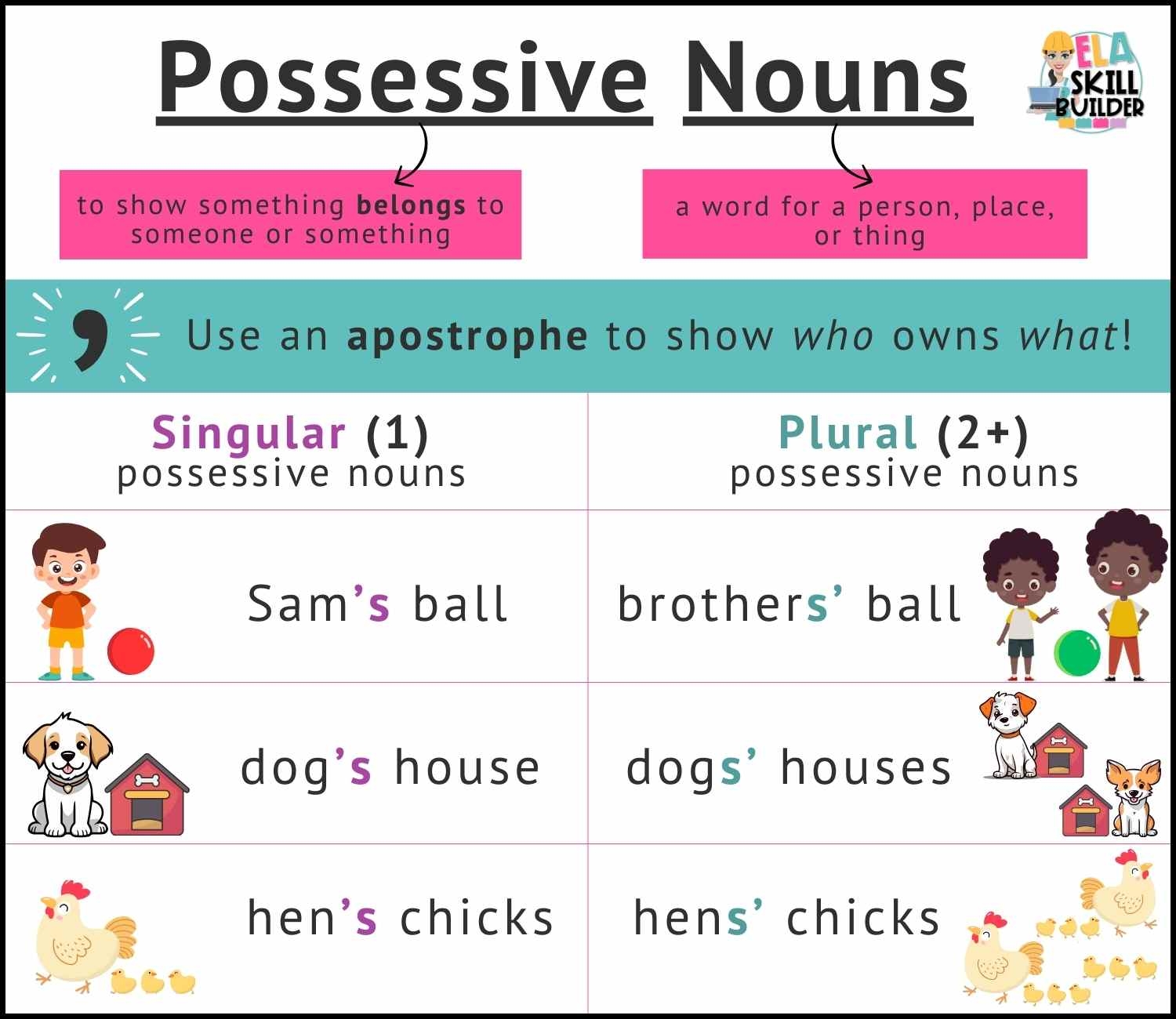Plural possessive nouns are used to show ownership or relationship of more than one person or thing. They are formed by adding an apostrophe and an “s” to the end of a plural noun. Understanding how to use plural possessive nouns correctly is important in writing to convey clear and concise meaning.
For example, “The students’ books” indicates that the books belong to more than one student. Without the apostrophe and “s,” it would simply be “The students books,” which does not convey ownership.
List of Plural Possessive Nouns
1. Students’ notebooks
2. Teachers’ desks
3. Dogs’ toys
4. Cats’ food
5. Parents’ car
Plural possessive nouns are commonly used in sentences to indicate ownership or relationships. They can be applied to various situations and contexts, making the writing more specific and accurate.
It is important to remember that when using plural possessive nouns, the apostrophe always comes before the “s” even with regular plural nouns that already end in “s.” For example, “The Joneses’ house” shows that the house belongs to the Jones family, with the apostrophe placed after the “s.”
When in doubt, it is helpful to read the sentence aloud to check for clarity and correctness in using plural possessive nouns. Practice and familiarity with these grammar rules will improve writing skills and enhance communication.
In conclusion, mastering the use of plural possessive nouns is essential for effective writing and communication. By following the rules and guidelines for forming and using them correctly, writers can convey their intended meaning clearly and accurately. Incorporating plural possessive nouns in writing adds depth and specificity, enhancing the overall quality of the content.
